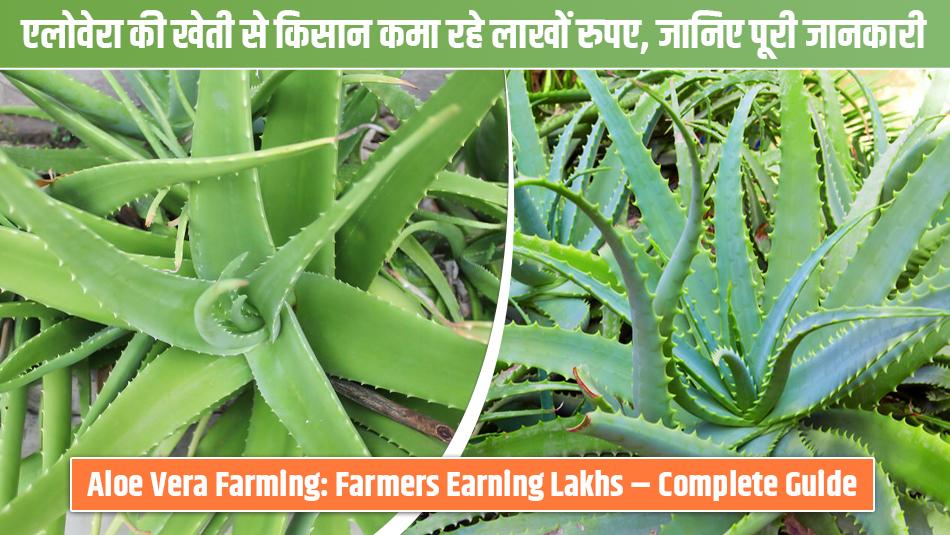
The cultivation of medicinal plants is rapidly gaining popularity among farmers across India. Aloe Vera (Ghritkumari), in particular, is considered a low-cost, high-profit crop. With the rising demand for herbal and cosmetic products, Aloe Vera farming has become a golden opportunity for farmers. When cultivated scientifically, one hectare of Aloe Vera can generate an annual income of ₹8–10 lakh.
Aloe Vera, also known as Ghritkumari or Guarpatha, is a succulent plant with medicinal properties concentrated in its leaves. Its gel is widely used in cosmetics, herbal medicines, and health products. The plant grows 60–100 cm in height, with thick, spear-shaped, light green leaves.
Aloe Vera is primarily used in face washes, creams, gels, face packs, hair oils, and medicines. It improves skin health and boosts immunity. Major companies like Patanjali, Dabur, and Himalaya produce Aloe Vera-based products. Many of these companies also offer contract farming agreements to farmers, ensuring a ready market.
Aloe Vera grows best in hot and dry climates. It thrives in sandy or loamy soil with proper drainage, as waterlogging can rot the roots. The best time for planting is July to August.
According to ICAR, the initial cost of cultivating Aloe Vera on one hectare is around ₹50,000. In the first year, farmers can harvest 40–45 tons of leaves, priced between ₹15,000–₹25,000 per ton. This translates to an annual income of ₹8–10 lakh per hectare.
Aloe Vera leaves can be sold to Ayurvedic medicine and cosmetic companies. Many companies purchase on a contract basis, ensuring a stable market. Leading buyers include Dabur, Patanjali, Biotic, and Himalaya.
Aloe Vera farming is emerging as an excellent business model for modern farmers. With low investment, low water requirements, and increasing market demand, it promises high profitability in the coming years. Farmers adopting scientific cultivation methods and direct contracts with companies can significantly boost their earnings.
Latest Update